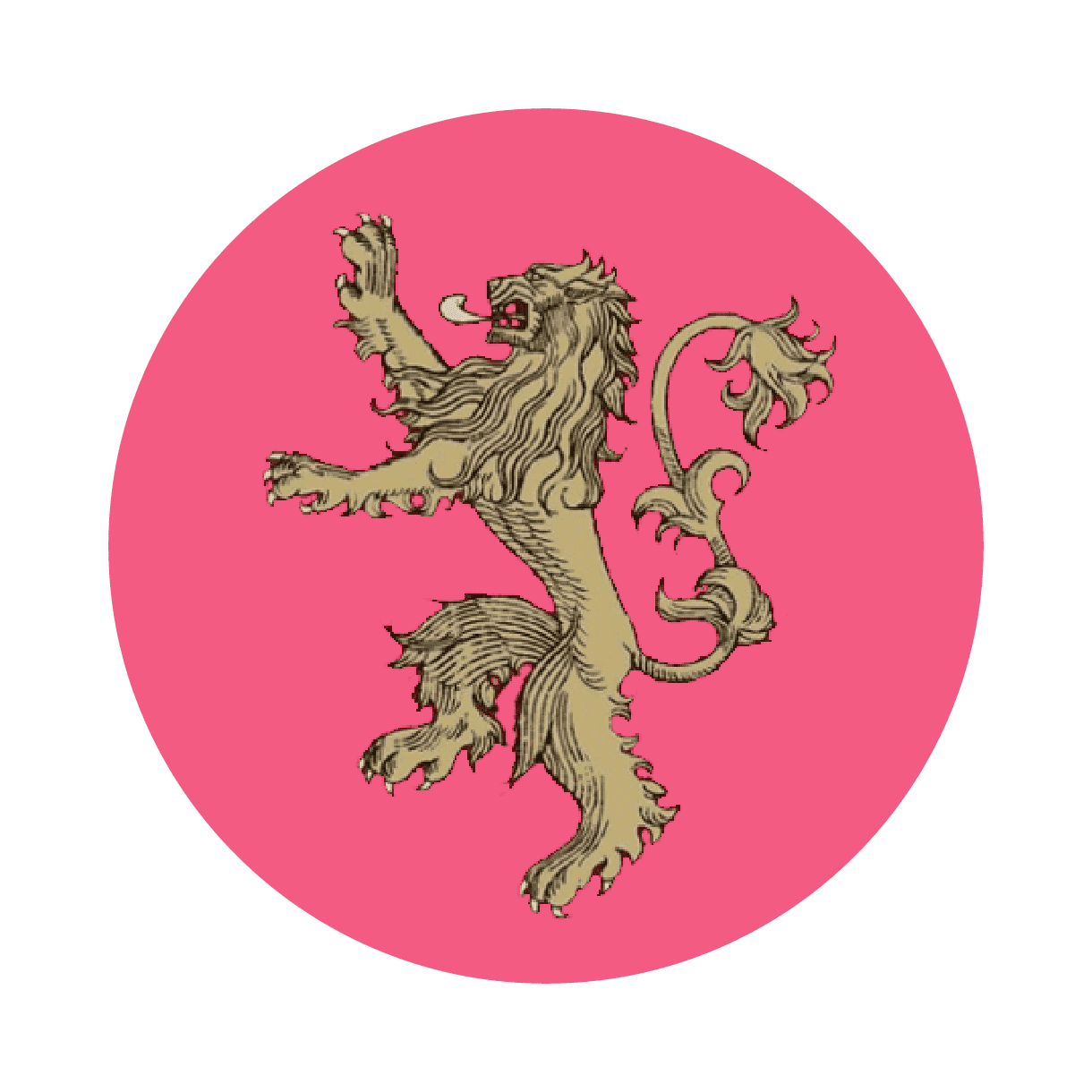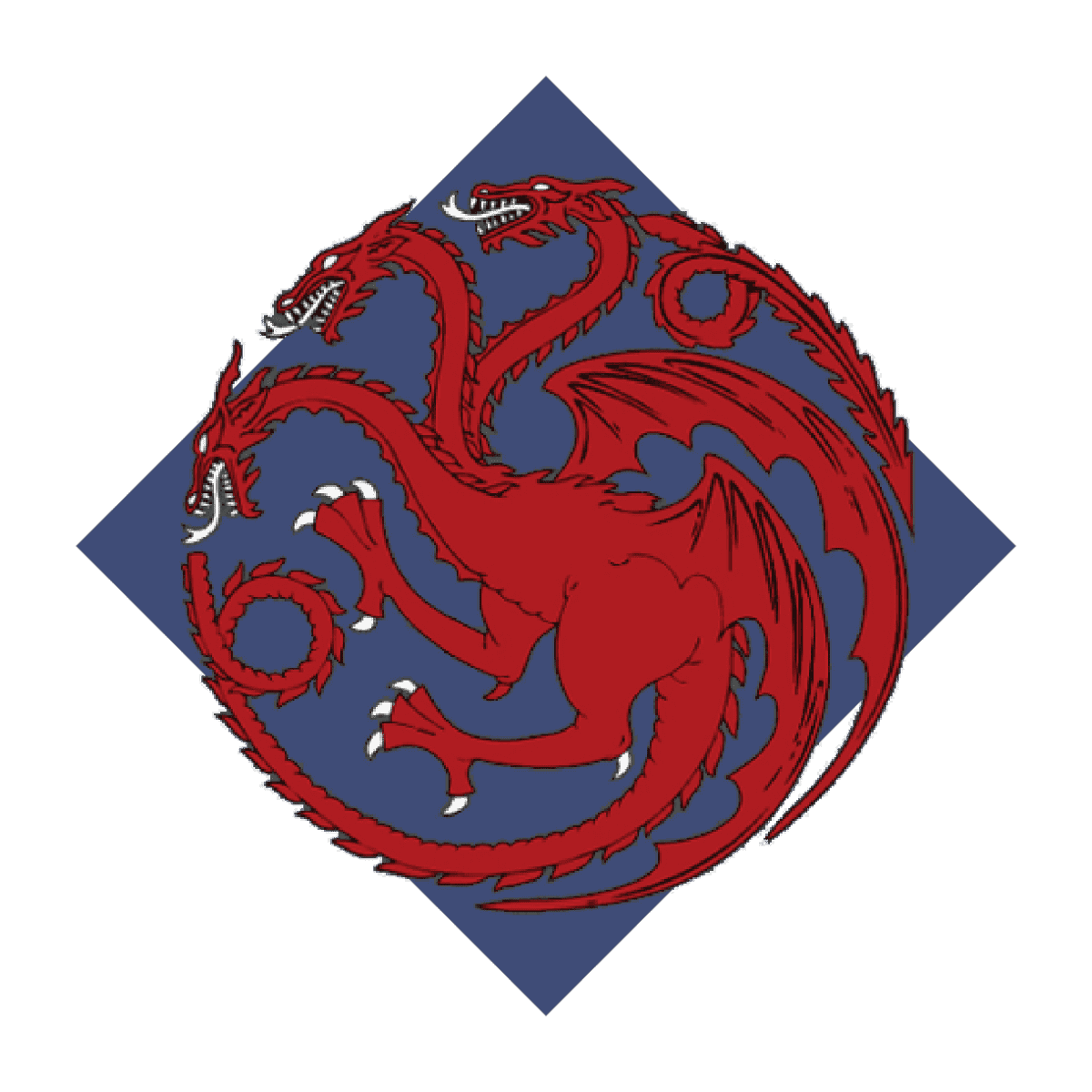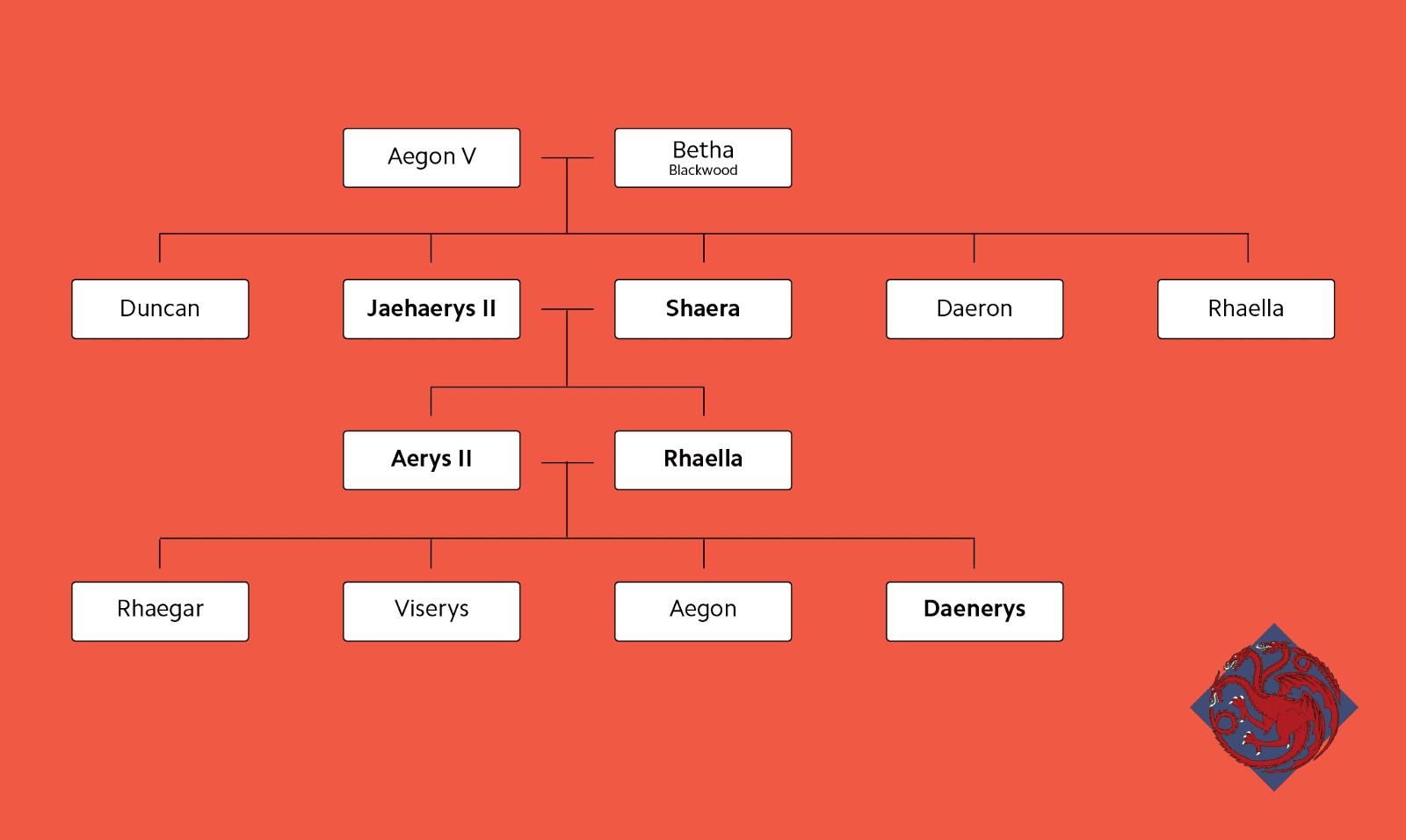Gene of Thrones

WARNING: CONTAINS SPOILERS FOR GAME OF THRONES SEASON 6, AND ALL BOOKS IN “A SONG OF ICE AND FIRE” SERIES
“I swear to you, I was never so alive as when I was winning this throne, or so dead as now that I’ve won it”- King Robert Baratheon the First of His Name, King of the Andals, the Rhoynar, and the First Men, Lord of the Seven Kingdoms, Protector of the Realm
Many of us at Helix obsess endlessly over Game of Thrones — from lands beyond the Wall in the North to the Dornish coast. Luckily, author George R.R. Martin has provided ample material for us to pour over and a few genetic riddles to decipher. One thing none of us can agree on is who should be sitting on the Iron Throne. Should it be the Baratheons? Or the Starks? How about the Lannisters? Or maybe the Targaryens? We spent long enough debating these questions before we realized there’s an easier way to find the answer — with genetics! At the beginning of the series, Robert is king, but only because he dethroned the Mad King. But now Robert is dead. Who is the rightful heir to the throne?
To answer this question, we need to understand how genetic inheritance works with physical traits. Normally, each parent has two copies of each gene. A child receives one allele (copy of a gene) from each parent, ending up with two alleles. Now simple Mendelian genetic inheritance (discovered by medieval monk Gregor Mendel fussing around with pea plants) shows that where one allele is dominant and one recessive, the dominant allele determines the phenotype (this is the observable characteristic in the child). A good example of this is earwax. The allele for wet earwax is dominant over the allele for dry earwax, so if even only one of your parents passes you down the wet earwax allele, you will have wet earwax.
To have dry earwax, you would need two copies of the recessive dry earwax allele and so must receive one from each parent. You’re probably asking yourself, so how will earwax determine the next ruler of the seven kingdoms? Let’s talk about the houses.
HOUSE BARATHEON: “OURS IS THE FURY”

Source: HBO
One of the most shocking moments in Ned Stark’s storyline is his realization of what Jon Arryn’s last words meant. Jon Arryn was Hand of the King to Robert Baratheon, and as he lay dying, his last words were “The seed is strong.” He wasn’t referring to a good year for grain harvests in Highgarden, but to Robert’s numerous bastard children and their striking resemblances to their father. In contrast, Robert’s supposed children Joffrey, Tommen, and Myrcella, bear physical resemblance more consistent with incest between Queen Cersei Lannister and her twin brother, the deadly knight Jaime Lannister. Robert Baratheon has jet black hair, and reputedly up to 16 illegitimate children, who all also had jet black hair. Meanwhile, Joffrey, Tommen, and Myrcella all have blonde hair, as do Cersei and Jaime, and when Ned went and checked the history and lineages of noble families of the seven kingdoms, it was recorded that every single offspring of a Baratheon and a Lannister were born with black hair — indicating that black hair color would be the dominant allele over blonde. As such it is very unlikely that Joffrey, Tommen, and Myrcella are truly Robert’s heirs.
From the story, we know that this is enough to spark a very large number of murders as Ned backs Stannis, Robert’s elder brother, as true heir to the throne. Genetically, unfortunately, hair color is not quite as simple as the Game of Thrones makes it out to be. In reality, hair color is actually determined by multiple genes, meaning simple Mendelian genetic inheritance as we explored above (with the earwax example) doesn’t quite predict hair color. Even if it were a simple Mendelian trait, at some point in Baratheon history we would expect at least one of the black-haired Baratheons to carry a recessive allele for blonde hair and have at least one blonde child, but according to the show, this has never happened.
Giving artistic license to a world with dragons and magic ice walls, perhaps the Baratheon bloodline carries some kind of magical hair color gene drive, overwhelming the natural balance of allele frequencies. While this has not been observed in human hair color, it is certainly a mechanism that could explain the supremely dominant black hair of the Baratheons. So with Joffrey, Tommen, and Myrcella disqualified, we are left with nothing but a large catalogue of illegitimate children (like Mya Stone at the Eyrie and blacksmith’s apprentice Gendry) and Robert’s brothers Renly and Stannis as potential heirs for House Baratheon. Given Renly and Stannis have since met violent ends, the hopes for a Baratheon monarch look slim unless an illegitimate heir can find some help — since most of Robert’s children did not make the cut of the television adaptation, our hopes are pinned on Gendry to reclaim his father’s throne, despite the insurmountable odds and uphill political climate he’d have to overcome.
HOUSE LANNISTER: “HEAR ME ROAR”

Source: HBO
Given what we’ve learned from the genetics of inheritance of Baratheon hair color, it seems that while the Lannisters currently sit on the iron throne, their position lacks genetic merit. As we discussed earlier, Cersei and Jaime are the parents of Joffrey, Tommen, and Myrcella, and most importantly Cersei and Jaime are twins. While identical twins have identical DNA, having originated from a single original embryo, fraternal twins share 50% of their DNA with each other and originate from separate embryos. Since Jaime and Cersei are fraternal twins, they are genetically the same as any other siblings. How might this affect their children? Well, we will talk more about that shortly when we get to the Targaryen dynasty.
In terms of right to rule, Cersei Lannister is the widow of King Robert Baratheon, but given that she had him murdered and is generally quite terrible to everybody, she also lacks Helix scientists’ vote of support. In addition, the Lannisters cannot claim any position in royal lineage from the line of Aerys and the Targaryen kings of old. So genetically the Lannisters can be discounted from our contest, but since Cersei still reigns, it is hard to rid ourselves of the possibility of a Lannister monarch at the end of all of this, unless wayward sibling Tyrion Lannister can rid the seven kingdoms of his crazed sister.
HOUSE TARGARYEN: “FIRE AND BLOOD”

Source: HBO
Daenerys Targaryen, Mother of Dragons, Breaker of Chains … Stormborn has a lot of titles and makes a variety of claims to the throne throughout her plotline. Daenerys is scion of House Targaryen, descended from the nobles of ancient Valyria. From Game of Thrones history, we know King Aegon I arrived on the continent and united it with a winning combination of brutality and dragons. His descendants have ruled ever since until Robert Baratheon deposed the Mad King, Aerys II, after his son Prince Rhaegar allegedly kidnapped Robert’s betrothed, Lyanna Stark. Daenerys undoubtedly has a strong claim to the iron throne: there is little doubt she is the daughter of King Aerys, and she has the silver hair and violet eyes that are characteristic of the Targaryen line.
The Targaryen dynasty is a good example of inbreeding as many have married within the family to keep bloodlines “pure and strong.” From this we can infer that silver hair, violet eyes, and even “madness”* are probably recessive genetic traits, and that inbreeding is effective in ensuring that those traits will appear in the next generation.
That striking silver hair, violet eye color, and “madness” is incredibly rare (i.e. nonexistent) elsewhere in Westeros, so the only way to keep it in the family is to, well…literally keep it in the family. Unlike the above earwax example where wet earwax is dominant over dry earwax, these Targaryen traits are recessive and therefore, a child would need to inherit a recessive allele from both parents for the trait to show.

Source: HBO
In addition to the above, the Targaryens are famed for resistance to heat and dragon riding, which seem to be heritable as well. Daenerys has twice survived intense fire in the television adaptation, and often seems untroubled by encounters with fire and scalding water. She frequently rides her dragon Drogon, and there is no record of dragonriders who do not originate from the bloodlines of old Valyria.
However, inbreeding increases the chance that a child will be born with both rare recessive alleles and the rare phenotype will be present in the child. This can happen in cases where the copulating couple is descended from a common ancestor, even if this common ancestor was a long way back. In genetics, we refer to this as “identity by descent,” where two rare recessive alleles are combined because they are identical, descending from the same original copy in a recent common ancestor (e.g. grandparent) of the inbreeding couple.
Another issue which may explain the rarity of the Targaryen traits like purple eyes and silver hair would be the rarity of those alleles in the population. In Valyria, even with the silver hair and purple eye alleles being recessive, if they were still common then we would expect a lot more children to have these traits. In the seven kingdoms, these alleles are not only recessive, they are also rare — and so we only see these traits coming forward in the highly inbred Targaryen line.
In the real world inbreeding can lead to increased chances of blindness, hearing loss, schizophrenia, and decreases in fertility, as well as immune problems. Royal families of old used to practice inbreeding to keep bloodlines pure — an example would be the Ptolemaic dynasty in ancient Egypt, whose inbreeding was thought to lead to many cases of Grave’s disease, an autoimmune disease with a number of symptoms consistent with ancient records of the family. Another example would be the House of Habsburg, a royal European house which included many marriages between cousins, and a high degree of the condition lantern jaw which can be inherited.
Clearly the Targaryen inbreeding is an order beyond that shown by the royals of Europe, and the rarity of violet eyes and silver hair beyond the Targaryen family has raised many questions about the origin of some other characters. For example, the Master of Whispers Lord Varys has violet eyes and a mysterious past. Could Varys be a secret Targaryen?
Moving forward, Daenerys has a strong genetic pedigree to back her right to rule, but she also has a long line of ancestors who went mad. For now, she is a strong contender for the Iron Throne, but time will tell if she has inherited more than silver hair and violet eyes.
HOUSE STARK: “WINTER IS COMING”

Source: HBO
House Stark has had a rough few years: Ned was beheaded at King’s Landing, Catelyn and Robb were murdered at the Red Wedding, and Arya and Sansa have had many close-calls. But there is one among them who might be hiding a secret royal heritage and with it a strong claim to the Iron Throne.
Jon Snow was introduced to us as the illegitimate son of Ned Stark. But, we’ve learned from the most recent season that he is in fact the son of Lyanna Stark, Ned’s sister. To jog your memory, what sparked Robert’s Rebellion was Lyanna being taken by Rhaegar Targaryen, which leads us to believe that Jon may be the son of a Targaryen. At Helix, we asked ourselves if Jon Snow could be the illegitimate child of Rhaegar Targaryen. If the Targaryen traits of silver hair and violet eyes are recessive, as we have explored above, then Jon could appear a Stark to the world but be hiding a secret heritage. With the might of the North behind him, this background may not matter as he proceeds. Things could get interesting later if the ability to safely ride dragons is truly tied to the Targaryen bloodline. Perhaps this is a weak claim to the Targaryen throne, since even if he is Rhaegar’s child he is most likely illegitimate and has no right to politically inherit. Undoubtedly his ancestry will come into play before the end, but in what manner we can’t be certain.
Another potentially inherited gift of the Stark’s is warging (a type of “skinchanging” animal mind-meld most commonly associated with direwolves). The five Stark children and Jon Snow find direwolf puppies as the series begins and from there we know that Bran Stark can control his wolf Summer ; Arya dreams of leading a vast pack of wolves as her lost wolf Nymeria, coinciding with reports of a vast wolfpack terrorising the riverlands. Jon Snow has entered the mind of Ghost, his white direwolf, and the wildling skinchanger Varamyr Sixskins identified Jon Snow as a skinchanger. But what about Ned’s siblings and other recent Stark generations?
One explanation of the sudden surge in Stark skinchangers would be a gene-environment interaction. The genetic underpinning of the phenotype is present, but the trait only manifests if a certain environmental cue is present. One example of this in the real world is phenylketonuria — people who carry the genetic mutation that causes this disease can have issues with brain development if they ingest too much phenylalanine, but if they eat a phenylalanine-free diet then the trait is not observed (you may have noticed food labels listing phenylalanine for just this reason). Here, the ability to link minds with a direwolf is carried by some in the North (including the Stark children), but is only realized through an interaction with a direwolf, (not seen South of the Wall in two hundred years prior to the Stark family litter). Perhaps there are skinchangers blithely wandering Westeros, unaware of their power, as they are missing the environmental cue to set off the trait!
A WORLD OF PROPHECY AND MAGIC
While we can look at the inheritance of “madness” or silver hair and the prevalence (or lack thereof) of blonde-haired Baratheons to try and determine who might best fit the Iron Throne, the world of Game of Thrones is one of magic, prophecy, and politics. How does this tie into the genetic background of these characters?
While Daenerys is in the House of the Undying, she sees a vision of her dead brother Rhaegar who tells her “the dragon has three heads.” Coincidentally, the symbol of the Targaryen house is a three-headed dragon, and since her vision, Daenerys has also hatched three dragons. We found one popular fan theory really enticing (mostly because it’s allowed us to speculate on the genetics): that there will be three dragon riders of Targaryen blood that will ride these newly-hatched dragons. With Jon Snow potentially being the illegitimate son of Rhaegar Targaryen, this would allow him to satisfy this prophecy, and any romantic entanglement between Jon Snow and Daenerys would return us to the motif of Targaryen inbreeding (with Daenerys being Jon’s aunt). Since Jon Snow knows nothing of his background, this is a very real possibility. As for the third head of the dragon, theories abound. Some think it may be violet-eyed Varys, and some people have even constructed bizarre theories that Tyrion Lannister may be of secret Targaryen heritage.
So who should sit on the Iron Throne according to Helix? If Robert Baratheon was the rightful King and succession is only given to legitimised children and blood-kin, it would be Stannis Baratheon and then Renly Baratheon…oh dear. If we allow Roberts’ baseborn children to enter the mix the prime contender in the literature would be Mya Stone, Robert’s oldest child whom he fathered whilst he was under Jon Arryn’s foster care at the Eyrie in the Vale of Arryn. Since she has not even been introduced in the show, and seems unaware of her parentage, we can probably write Mya off as a contender. Based on the television series, the most prominent offspring of Roberts’ would be the blacksmith’s apprentice and one time companion of Arya Stark, Gendry, last seen rowing away from Dragonstone having been saved from ritual sacrifice by Davos Seaworth. However we haven’t seen him since season 3, which is rather a long time to be rowing. While he might have the genes for the job, as of right now he lacks the support (and presence). Daenerys carries the flag for the Targaryen line, but given their track record of “madness” her return might not be as much of a boon as some might hope.
Here at Helix some of us want Jon Snow to sort it all out, some of us want Daenerys to reclaim her father’s throne with dragon fire and a Dothraki horde, and a few of us just want Gendry to show up again and give us some closure. But if Game of Thrones has taught us anything, it is that royal succession in Westeros is rarely as straightforward as genetic inheritance (which is not really that straightforward either), and often has more to do with fire than blood. Perhaps the next monarch of the seven kingdoms will be someone with a touch of both?
*Note that the genetics of mental illness is complex and we don’t know what author George R.R. Martin specifically means when he says “madness.” We are not making any claims about the genetics of mental illness or referring to any specific mental illness.
While we hope that using Game of Thrones as a way to explain some complex genetic concepts related to inheritance and inbreeding is both helpful and entertaining, we want to emphasize that the examples here are entirely fictional. Westeros, luckily, is not real, nor are the characters described.
Visit our blog for more on the genetics of inheritance. And for more information on Helix, visit helix.com.